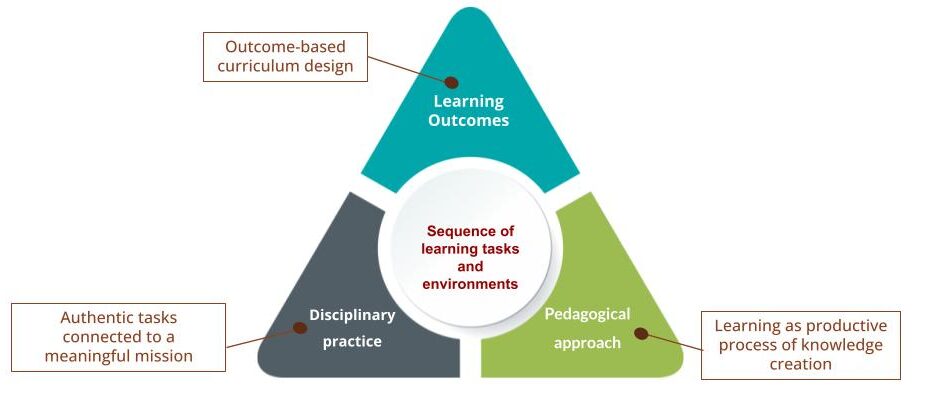Learning design refers to the process of intentionally designing and planning learning experiences and learning environment to achieve specific learning outcome and promote deep understanding and facilitate meaningful learning.
It involves considering factors such as the learning objectives, content, instructional strategies, assessment methods, and the overall learning environment. Learning design considers various factors such as the needs and characteristics of the learners, the subject matter, available resources, and the learning environment. It may involve incorporating various instructional strategies, technologies, and assessment methods to optimize the learning process. (Beetham, H., & Sharpe, R. 2019; Laurillard, D. 2012).
The Learning Design Triangle is a framework that helps teachers ensure that the learning outcomes, disciplinary practice, and pedagogical approach are well-aligned and integrated. It emphasizes the importance of coherence and effectiveness in learning design (Law and Liang, 2020). The Learning Design Triangle consists of three key components:
1. Learning Outcomes: These are the specific knowledge, skills, and values /attitudes that learners are expected to acquire through the learning design. Learning outcomes should be clear, measurable, and aligned with the goals of the course or program.
2. Disciplinary Practice: This refers to the specific practices, methods, and approaches used in a particular discipline or field. Teachers need to consider how disciplinary practice can be effectively integrated into the learning design, ensuring that learners understand and engage with the key concepts and principles of the discipline.
3. Pedagogical Approach: This component focuses on the methods, strategies, and techniques used to facilitate learning. Teachers must choose appropriate pedagogical approaches that support the desired learning outcomes and align with the disciplinary practice. This could include Self-directed learning, collaborative learning, problem-based learning, or other instructional methods.
The Learning Design Triangle encourages teachers to consider the interrelationships between these three components and ensure that they are integrated in a way that maximizes learning effectiveness. By aligning learning outcomes, disciplinary practice, and pedagogical approach, teachers can create coherent and meaningful learning experiences for learners.

 https://ilap-ideals.cite.hku.hk/
https://ilap-ideals.cite.hku.hk/ https://lds-info.cite.hku.hk
https://lds-info.cite.hku.hk